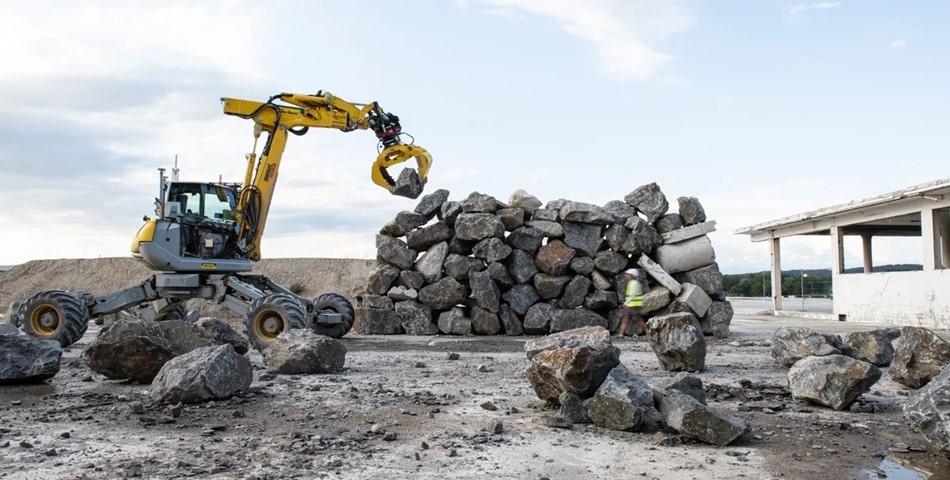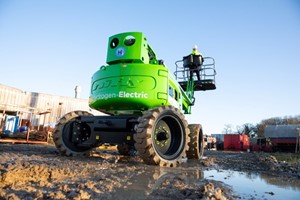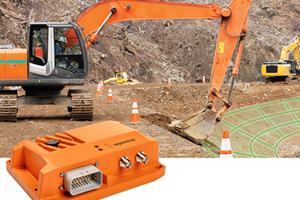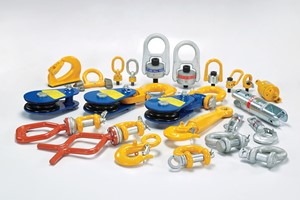Construction provides the backbone for industries including manufacturing, transportation, civil engineering and agriculture. Yet, it lacks enough resources to meet continuously growing needs for infrastructure.
Now, a 12-ton autonomous robot offers a sustainable blueprint for moving forward. The excavating machine can scan, digitally inventory and stack materials such as boulders and recycled concrete — all without help from humans. While it uses its skillset to build freestanding, mortarless stone walls, the robot also develops 3D repositories of the materials it uses, making it easier to recycle and repurpose those materials if needed.
"By maintaining a digital inventory of the materials within buildings, it becomes easier to plan for reuse before the wrecking ball arrives on site, which in turn can save substantial materials from unnecessarily heading to the landfill," said Ryan Johns, first and corresponding author of the study published in Science Robotics and researcher specializing in architectural robotics at ETH Zürich.
Seeking Concrete Solutions
Between 1997 and 2017, labor productivity in construction averaged only about 1% growth per year compared to the global economy's 2.8% per year. Autonomous robots could be one approach to addressing this discrepancy. These machines aren't intended to replace stonemasons, architects or anyone else, but rather support an understaffed, overwhelmed and decentralized construction pipeline.
"Construction sites are complex environments with many unpredictable events that will continue to be a challenge for robotic solutions," Johns noted. "Robots will need humans to conduct and correct them, but they nonetheless carry the potential to amplify the productivity of workers by facilitating efficient multitasking."
Besides a labor shortage and project management quandaries, the industry also faces another glaring problem: many of its processes harm the environment. For example, in 2018 construction yielded 600 million tons of waste in the United States alone.
"The longer we can use building materials responsibly, the more return we get on the sunken environmental cost of manufacturing or extracting them," Johns said. "Buildings are demolished for many reasons, and often they contain many pieces that could be used elsewhere."
Beyond demolition waste, the process also drives greenhouse gas emissions related to the production of cement, plastics, steel and glass. In fact according to a paper cited by Johns' team, cement manufacturing contributes to more than 8% of all carbon dioxide emissions.
It's obvious that recycling and repurposing materials at any given structure's end of life could reduce the need for manufacturing of new materials. However, these tactics are hard to implement because of existing issues in the construction pipeline.
"It is a big logistical challenge to know how these materials can find new homes without inefficient and costly transportation and storage," Johns added. He and his co-authors hypothesized that this problem might also be solvable if they designed an autonomous robot with the tools to record and store the specifications of materials.
Laying A Firm Foundation
By incorporating LiDAR mapping sensors and deep learning visualization method called image segmentation into an off-the-shelf, claw-armed machine, Johns and his colleagues transformed the wheeled device into an autonomous robot able to catalog each stone or chunk of recycled concrete it grasped.
"We use the LiDAR sensors, mounted on the excavator's arm and cabin roof, to build a real-time 3D map of the construction site. Using that map — in combination with image segmentation — allows the robot to find individual stone instances, and to pick them up for further inspection," Johns said. "By spinning each stone in-hand, the system obtains a full 3D model of every stone.
They then established geometric planning algorithms so that the robot could gauge where to put each material when assembling a structurally sound stone wall without mortar or wet materials. At designated sites including a public park, the robot imaged local boulders and recycled materials and generated a 3D database of the objects' shapes and estimated masses, using both steps to optimize its construction plans.
"Part of the benefit of the system is that it can test how stones fit virtually before they go into place," Johns explained. "Humans typically make an educated guess, try a couple things, and then force a placement to work by knocking off a corner with a sledgehammer, or sticking some smaller wedging stones underneath for stability."
From these plans, the robot produced a 10-meter-long freestanding wall with 109 distinct pieces of waste concrete and local boulders. It also built a 65-meter-long retaining wall made of 938 separate objects. Although the machine took about 1.2 minutes longer on average to place each stone than a group of people would, it did so with minimal personnel on site, indicating its potential to assist in the increasingly stressed global construction pipeline.
"There is so much demand for construction — there are housing shortages and a need for new sustainable and resilient infrastructure across the globe," Johns said.
Those needs are front of mind for the group. They plan to see if they can take the principles used for this work and apply them to convert other off-the-shelf machines into autonomous robots that facilitate circular construction practices. "[We] will continue to explore new frontiers for robotic excavation and sustainable in situ fabrication," he added.













